
Beamish Transport Objects in Focus… Number 4 (Part 3)
The Beamish Cycle Collection
Part 3 The Safeties by Ian Bean
This instalment looks at the development of the Safety, with specific reference to some of the bicycles in the collection. It is not meant to be a complete list of all the cycles within this category, but I hope it will act as a road map to the major developments and encourage you to explore the subject further.
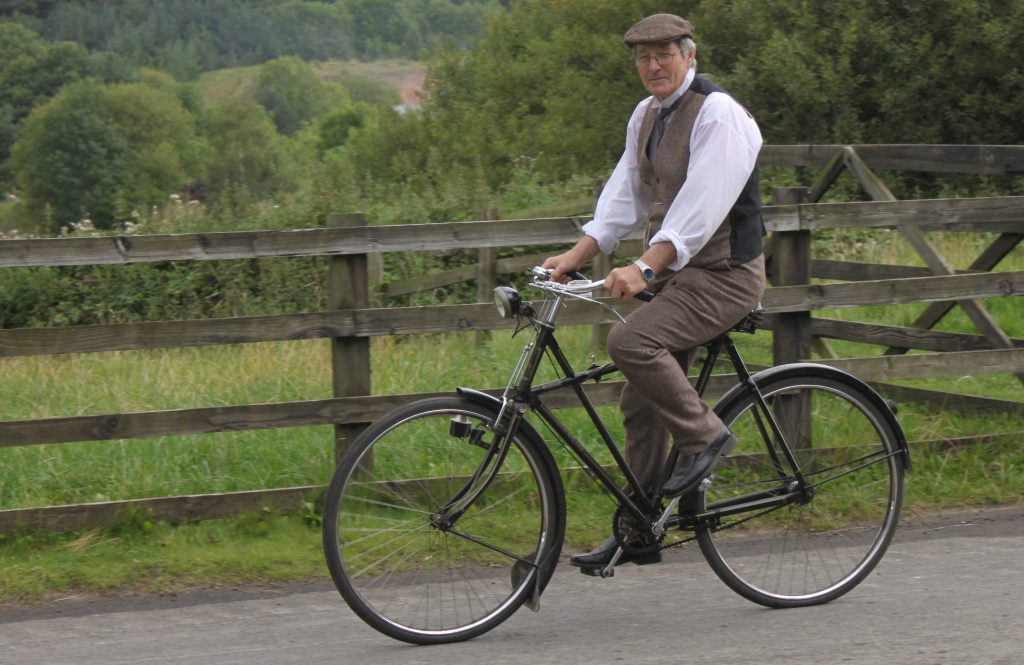
In part 2, I mentioned the introduction of the “Safety” in 1885 as the moment when the reign of the high bicycle ended. This is simplifying the story somewhat, as the idea of a bicycle providing power to the back wheel by chain had been mooted in 1869. In 1879 the Tangent and Coventry Tricycle Company produced the Bicyclette, a small wheeled cycle driven by chain to the rear wheel. It resembled an elongated ordinary with a chain driving its slightly enlarged rear wheel.
This machine was not a success, but the need for a safer cycle remained (see part 2 the Facile and Xtraordinary) and several makers started making safeties in 1884. One of these machines, made by Sutton and Starley, was the Rover. John Kemp Starley was James Starley’s nephew and the Rover was exhibited, in early 1885, at the Stanley Show. The design needed tweaks to its steering, but with the addition of a professional rider and a bit of record-breaking, sales soared. Rover literature stated that the cycle “set the fashion to the world” and they were probably correct in their claim. Good marketing undoubtedly helped the Rover, but it could not mask the safety’s one weakness – its lack of comfort.
The final piece of the jigsaw was provided by Mr John Boyd Dunlop with his invention of the pneumatic tyre, first used for racing purposes in 1889. Thick, solid, rubber cushion tyres were used as a cheaper alternative but by 1895 the air-filled cover reigned supreme. The safety allowed women to cycle respectably, although the social conventions and fashion of the time still made this difficult.
It was not until the period between the world wars that cycling really took off for the masses. Cycle prices reduced considerably around 1900 but were still prohibitively high for the working class. Working people also struggled to find time for cycling. The working week could be 6 days long and Sunday cycling was frowned upon. However, times were gradually changing, and the formal cycling clubs began to reduce in membership as the bicycle became a ride to work machine and a way to enjoy Sunday visits to the countryside.
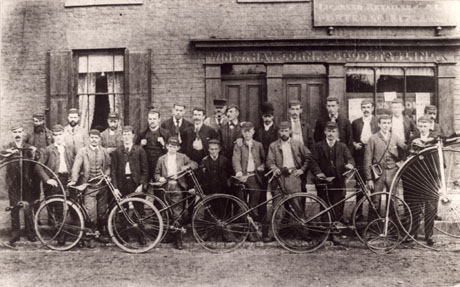


Frame Designs – The Rover used an elongated diamond shape but with curved tubes. One disadvantage of this type is its weakness when the top tube is omitted to produce a Ladies frame. Many hundreds of designs were produced with cross frames in the late 1880s where a tube runs from the front forks to the rear hub bisected by a down tube from the seat to the chain wheel and pedals. Beamish has a solid-tyred machine of this design in its collection.
Prior to the coming of the pneumatic tyre, several manufacturers produced sprung framed bicycles to address the comfort issue, perhaps the best known was the Whippet. A big advantage of the Safety was the ability to adjust the bars and seat position to suit riders of different stature. Riders were still used to dismounting when stationary and frames were quite high, a situation remaining till the 1920s.
With fixed wheel drive, many machines were fitted with steps on the rear spindle allowing mounting in the style of the ordinary. A variation on the theme was the Dursley Pederson with a hammock saddle. Mikael Pederson had received a patent for his design in the early 1890s and they were produced in Dursley, Gloucestershire.
In the Swinging Sixties, Alex Moulton transferred his rubber suspension expertise (his designs were used in the Mini car) to produce a small wheeled bicycle which was comfortable, unisex and very fashionable. Beamish has a Moulton in its collection kindly donated by the family of one of our volunteers.
The Freewheel and Brakes – Before the turn of the 20th century many cyclists believed the machine should be as simple as possible and this combined with the retention of plunger front brakes tended to discourage the fitting of freewheels. These became more widespread by the turn of the century often with a freewheel and coaster brake combined, allowing the rider to experience the pleasure of freewheeling with the ability to brake the rear wheel by pedalling backwards.
Rubber block, stirrup brakes soon superseded the plunger being more efficient and less wearing to the expensive tyres. Cork, or felted wool pads, would be used on lacquered wooden rims. Drum brakes were sometimes fitted from the late 1920s on more expensive machines often combined with integral dynamos. Although more effective, drum brakes required long torque levers which could stress delicate fork blades.
Chains – Although the now familiar roller chain had been around from 1880 it didn’t become the go to design until the turn of the 20th century. Block chain was often used comprising side plates which each attach outside of blocks with pins through their outer ends. These chains are simple but tend to be heavier and less efficient than roller chain due to a lack of rolling action as they engage/disengage from the sprockets.
The Beamish solid-tyred safety is fitted with block chain. Another interesting variant was the Simpson Lever Chain invented by William Spears Simpson in 1895. This design was constructed of linked triangles with the top level of the triangle driving the rear cog and the lower level driven by the chain ring. The chain ring and rear hub cog had grooves into which the rollers of the chain engaged. Ladies machines and many gents cycles had full chain guards fitted to protect the rider’s clothes from being caught, or dirtied, by the chain.
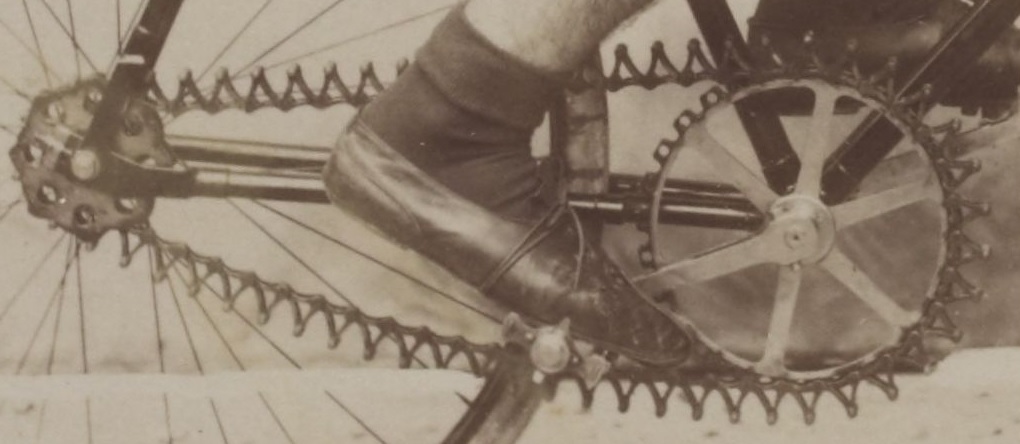
The World of Gears – Many of the cycles in the collection are single speed machines. Despite our modern fascination with multi geared cycling, a well-chosen single speeder can be very satisfactory. Sturmey-Archer produced their first 3 speed epicyclic hub gear in 1902 and it soon became a firm favourite. This hub gear benefited from the enclosed design which protected its mechanism from road dirt and water, whilst at the same time containing essential lubricant.
Manufacturers such as Sunbeam produced 2 speed epicyclic bottom bracket gears which could be used on their own or combined with 2 or 3 speed hubs to give a wide selection of ratios. Sunbeam products often carried the “little oil-bath” chain case which protected and lubricated the entire transmission and these should not be confused with the simple, steel, pressed chain guards of other manufacturers.
The Derailleur type of gear which derives its name from the French term for the derailment of a train from its track, first appeared in the 19th century, but the term Derailleur seems to have been first used in the 1930s. The Cyclo gear working on this principle was imported from France in 1926. To avoid harsh import charges a British company was formed in Birmingham. This product was fitted to many British machines.
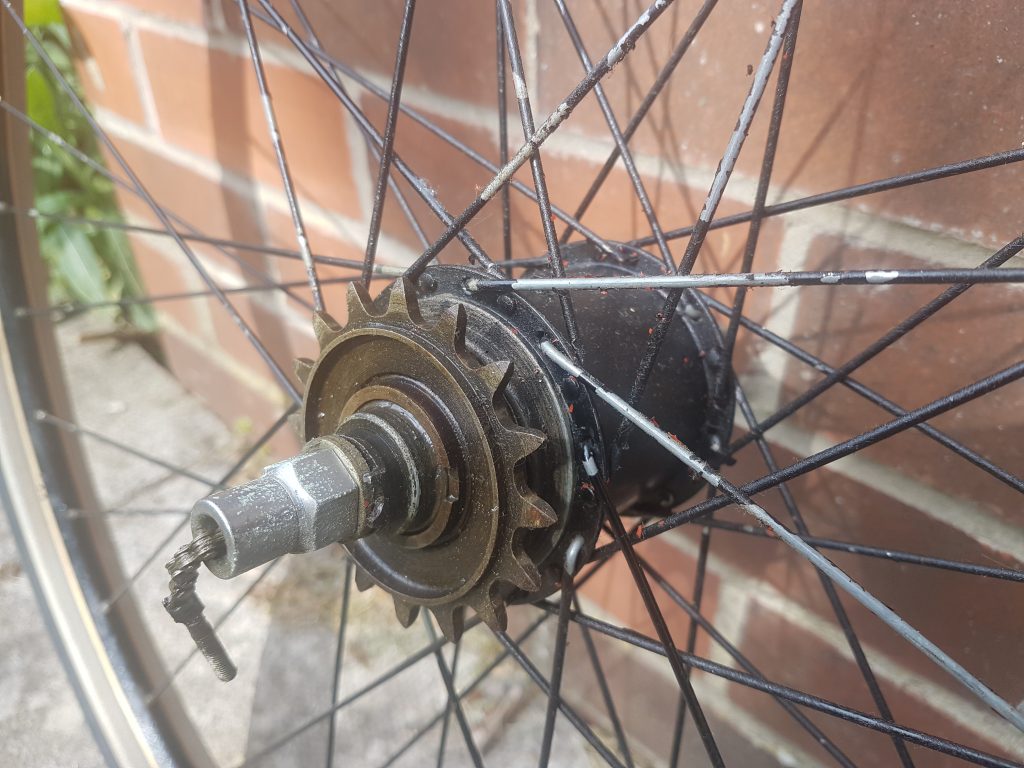
Business Purposes – As cycles became more common it soon became obvious that they could not only be used to travel to and from work, but also for the work itself. A set of ladders, or tools, could be carried, and purpose-built delivery bicycles could be used to transport goods to customers’ homes whilst serving as mobile advertisements. In coal mining areas, particularly those close to the sea, old bicycles often without chains pedals or tyres were used to transport sea coal from the beach to the home in hard times.
These machines were often gradually refurbished by their owners to resume their original purpose as modes of transport. Machines built in the first half of the 20th century were, generally speaking, robust and well made with a long life expected. A 1936 BSA in the author’s ownership came with a 50-year guarantee!
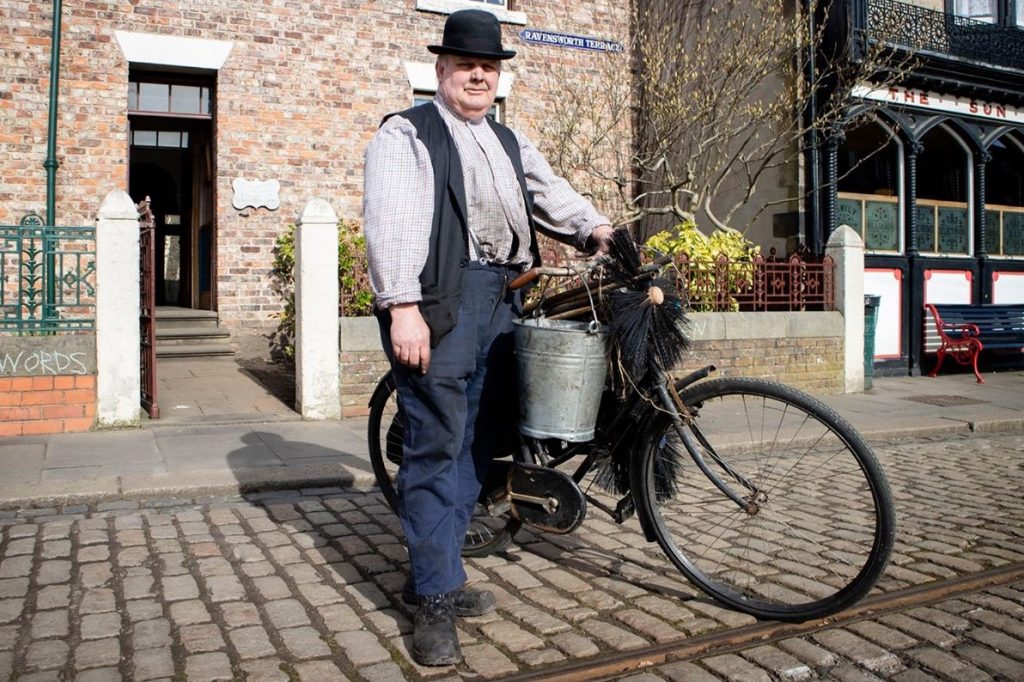

A closer look at some cycles on display

In the Town Garage…
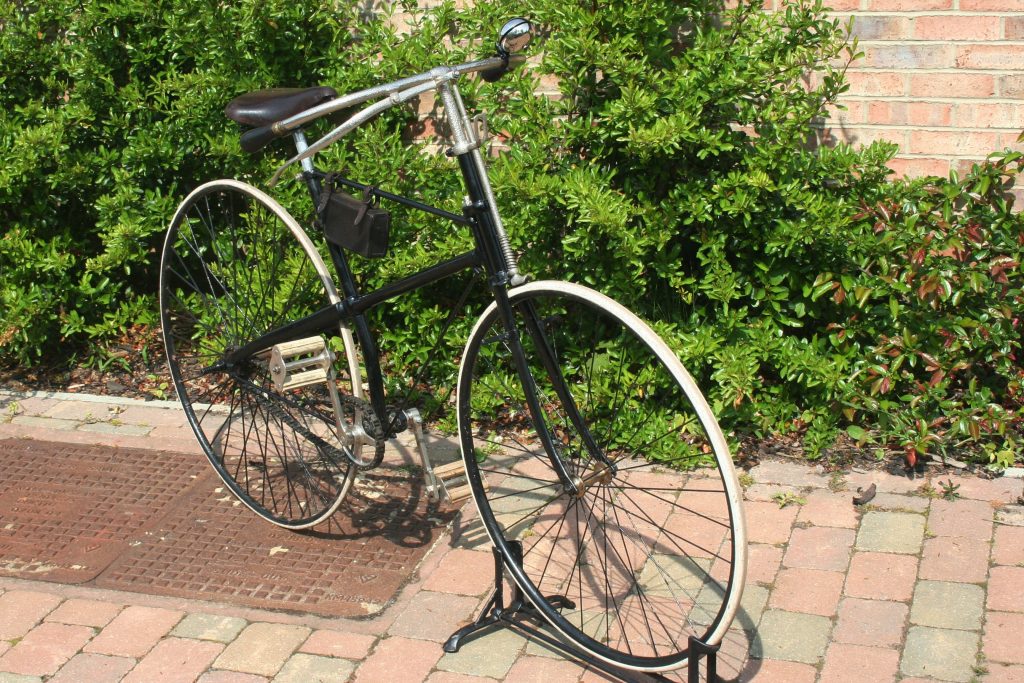
1903 New Hudson Gents Sports – Priced at ten guineas new*. Single speed, fitted with a coaster hub with back pedal brake on rear wheel only. Restored.
1906 Rudge Whitworth Gents Sports – Single speed, fitted with beaded edge tyres and single brake lever working coupled front and rear brakes. Cottarless cranks. Restored.
1913 Raleigh Ladies Loop Frame – Single speed, originally owned by Lady Ravensworth, and later sold to Lady Irving of Alwinton. Restored.
1923/4 Rover – Donated by Dr Gibby of Durham University who bought it new. Single speed, the saddle is embossed with the Rover trademark. Restored.

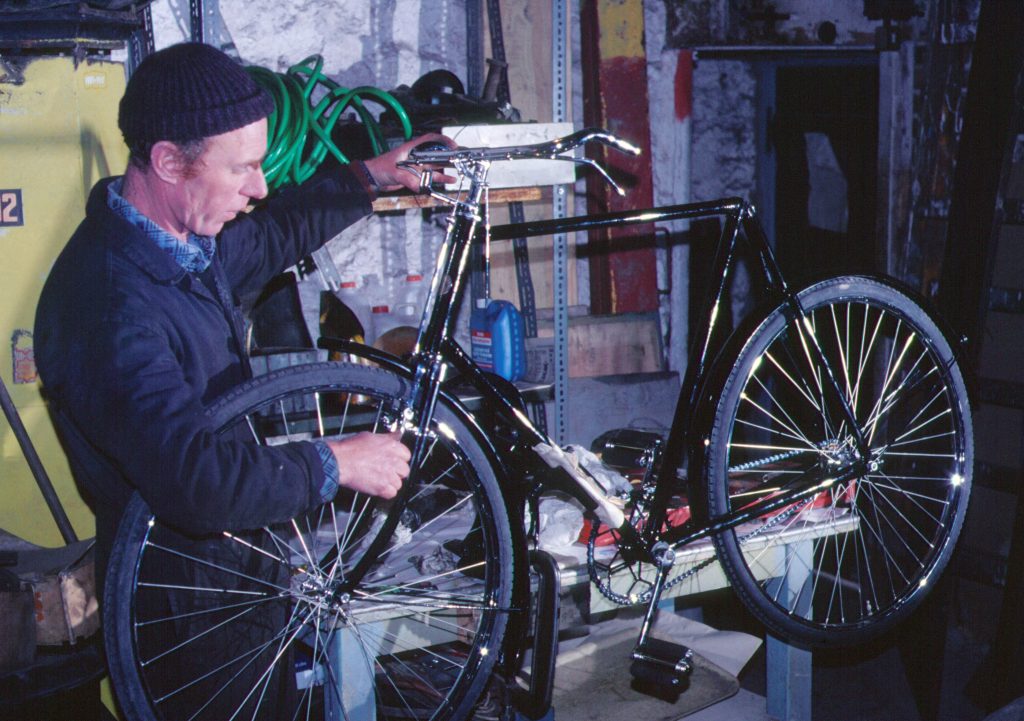
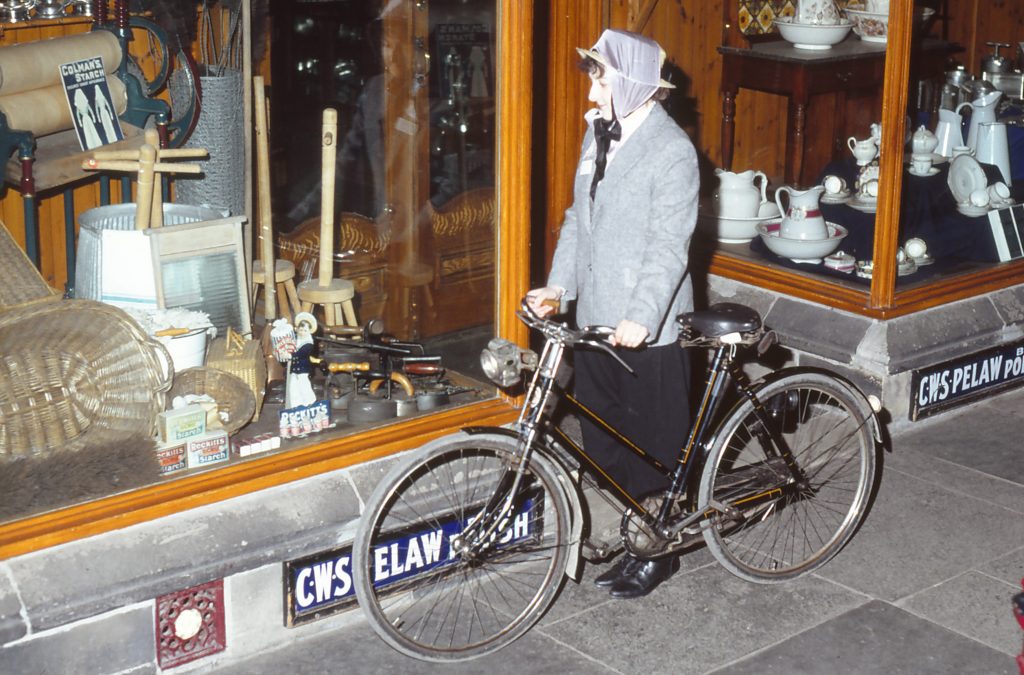
1933 Humber Ladies – By this period Humber bicycles were being produced by Raleigh, so this machine is an excellent example of badge engineering. It is fitted with front forks made from four separate tubes harking back to an era when Humber cycles were a prestige product. Another symbol of quality is the fitting of hub brakes. This machine is fitted with a wicker child seat attached to its rear carrier. Restored.
In the Coop Hardware department…
1913 Singer Gents – Single speed fitted with back pedal brake and a tyre inflator screwed into the handlebars. Restored.
c. 1913 Trade cycle – Single speed delivery cycle with stand and basket – normally on display outside the Grocery Department. Unrestored.
You may also see machines made by Sunbeam and local Newcastle manufacturer, Jack Adams. The unrestored 1933 Golden Sunbeam Gents 3 speed in the collection is a large frame with double top tubes. This feature was for many years associated with police bicycles. The Sunbeam is fitted with the Sunbeam “little oil-bath” chain case which has the fork leg built into its construction.
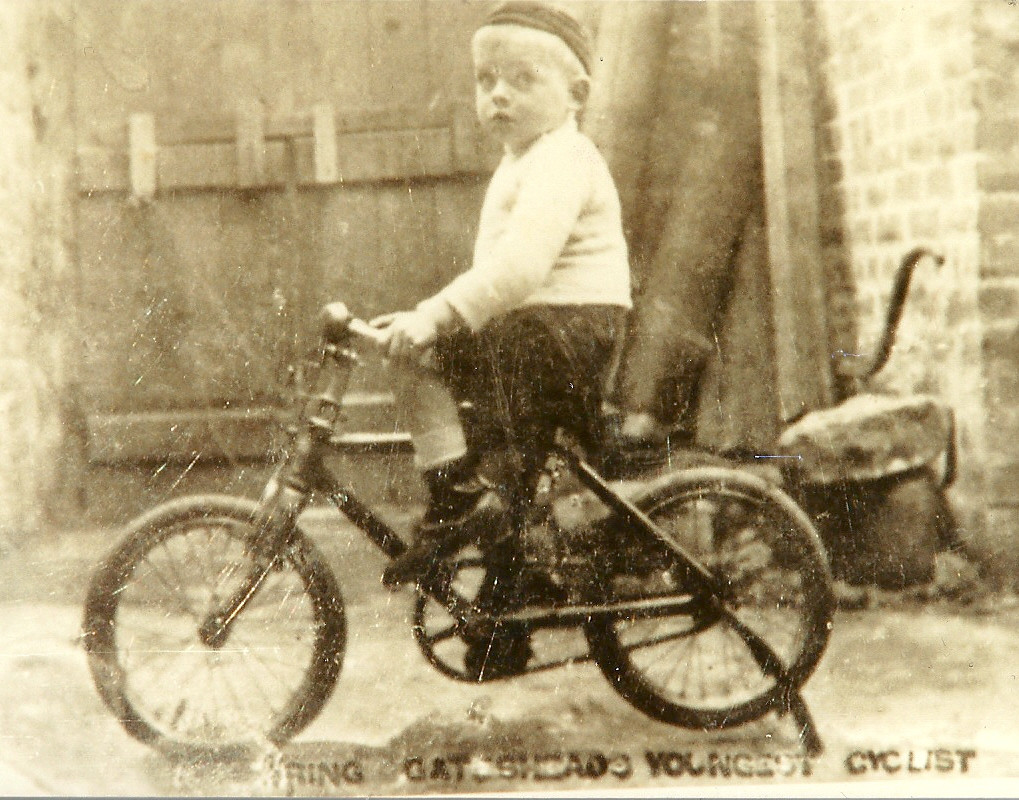
Elswick cycles – If you had ever wondered, the Elswick – Hopper Cycle and Motor Company which made cycles and delivery bicycles in Barton on Humber took the Elswick part of its name from the Elswick Cycle Co. founded in Newcastle 1880.
The Working Collection – The staff at Beamish use cycles from our working collection for transport around site. Travelling between areas at the museum is most efficiently accomplished by this cheap and green form of transport, bestowing staff and volunteers with added health benefits. These, predominantly Raleigh made, machines are from a variety of periods and are unrestored but maintained by Friends’ workshop staff for safe use. You will see these machines leaning outside of buildings, tucked in sheds and alleyways or being ridden, still doing the job they were designed for.

Restoration – The restoration of the Safety bicycles was a similar process to the High Bicycle one described in part 2, although it did present new problems. A good way of dating machines is by the type of plating carried and the type of tyres fitted. After 1929/30 most manufacturers moved over to chromium plate, rather than nickel and this is easy to spot, once your eye becomes accustomed to the difference. It does tend to be more expensive than nickel plate and because of the chemicals used is best left to the professionals. Again, we tend to prepare our parts by polishing them ourselves before dispatching them to the platers.
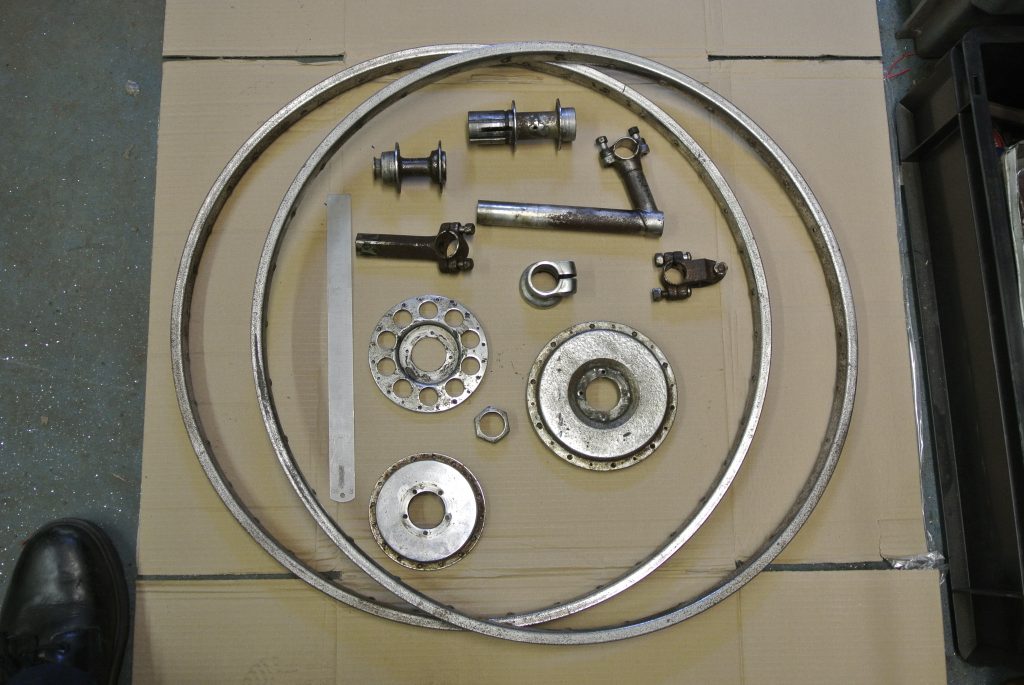
Until the late 1920s, cars, motorcycles and bicycles were fitted with beaded edge tyres. These tyres are held on to a rim with turned in edges by beads (a lip) fitted to the outside walls of the tyre. The pressure of the inflated tube forces the bead into the rim, keeping the tyre in place. A puncture repair kit and tyre levers would always be carried by a sensible cyclist. Sunbeam cycles carried repair materials inside the handle-bar grips.
We have a large selection of cycle repair tools in the collections and these were of great assistance. A spoke threading machine (one can be found on the bench in the Town Garage) is invaluable when preparing different lengths of spokes and a wheel trueing frame was used when rebuilding wheels. The individual spokes are tightened gradually whilst checking that the wheel remains aligned in vertical and horizontal planes. Japanned and stove enamel finishes were being used from the First World War period and we used a combination of traditional and modern paints to replicate the correct finish.
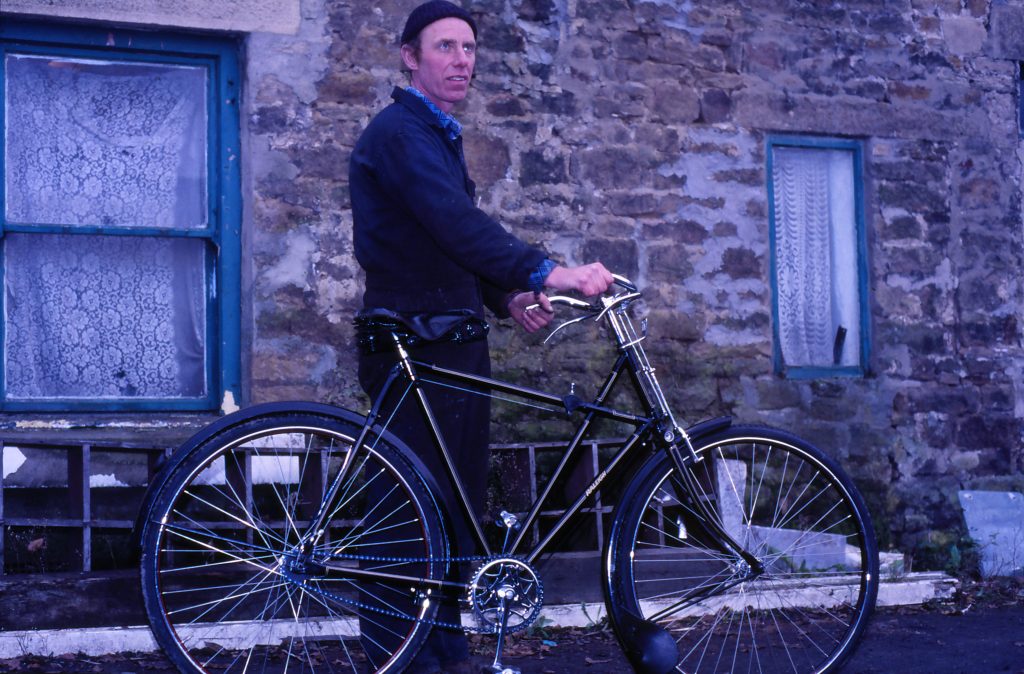
Transfers and makers marks are much easier to reproduce in this digital age. Unfortunately, this was not the case when most of our restorations were completed, so we had to rely on outside firms to produce waterslide or spirit fix transfers when a proprietary version was not available. Leather saddles can sometimes be brought back to life with careful treatment but, in most cases, they need to be replaced. This can mean having special tops made, but, as Brooks continue to make leather saddles in traditional styles, replacements can often be purchased off the shelf.
Recommended further reading:
On Your Bicycle – an illustrated history of Cycling by James McGurn
Cycle Clips – a history of cycling in the North East by Tyne and Wear Council Museums
Early Bicycles by Nick Clayton Shire Album 173
Notes
*A Guinea was the equivalent of One pound one shilling (252d) or (£1.05 in today’s money)
I hope to conclude this account of the Beamish cycle collection in part 4 looking at the cycles with more than two wheels and/or carrying more than a single seat.







Hi Dan article,I’ve seen the co bike outside on my last visit a few months ago.I’ve now got my own cws cooperative society marked delivery bicycling good condition.it has signage on a straight sign not an angled.sign like your one. How can I go about dating this bike? It’s going to my local museum with the rest of my collection of vintage bicycles.also,do you have a need for any additional vintage bicycles for long term loan 3rd regards mr a hamilton